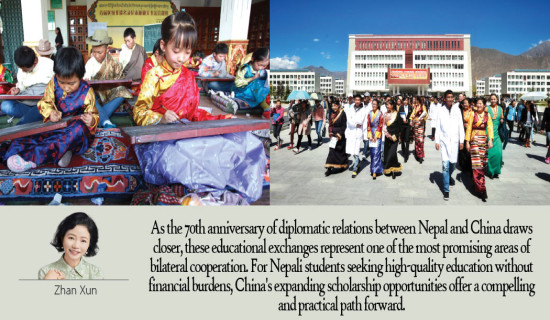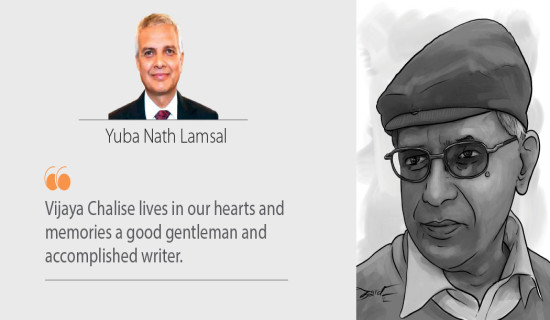- Saturday, 14 June 2025
Science Is Not For Immediate Gains
A gentleman from the audience walked up to me after I concluded my recent keynote talk at a celebrated university, and posed a fair point – in an event on behavioural sciences, I talked about how honey-bees solved an optimisation problem (that led them to build hives with almost-perfect hexagonal cells) and how moths developed a navigation heuristic (that no longer works in the modern world with street-lights that confuse them) – one story of success and one of failure.
The behavioural insight here was that problems often need to be resolved when existing solutions no longer work in dynamic environments – a reality to which even non-human entities are bound. Yet, this gentleman felt that since this was an event attended by humans, the behavioural insights offered needed to be specific to humans, and therefore, the ‘so what?’ was missing. Fortunately, in a moment of quick reflection, the puritan within me rose to the occasion with a rather elaborate response: the ‘so what?’ was missing for a very valid reason – it is always missing.
Let me explain this using the following short stories.
Effective tool
William Hamilton (Irish mathematician) thought out the idea of ‘quaternions’ (four-dimensional generalization of ordinary numbers), which had no practical interest at that time (1843). This eventually turned out to be a surprisingly effective tool in modern robotics and computer graphics – a field that formally developed more than a hundred years later! Johannes Kepler talked about the most efficient way to pack spheres in three-dimensional space (again, not very useful way back in 1611). Today it is applied to the most efficient transmission of information over noisy channels. The most important breakthroughs in the development of secure ciphers today come from age-old advancements in pure mathematics. A ‘new geometry’ pioneered by Bernhard Riemann, dealing with curved spaces, much later turned out to be ideal for Einstein’s general theory of relativity (and a new theory of gravity) – and today our artificial satellites are a consequence of this understanding.
For the last story above, imagine someone asking Riemann, “Okay, you’ve developed a new geometry – so what?” immediately after his lecture on the said topic: it is unlikely that he would have provided an instantaneous response to this question. Riemann himself never lived to see the fruits of his work applied to Einstein’s relativity. Similarly, the ‘so what?’ was missing (at least immediately) in all these stories. A training in the formal sciences requires a degree of comfort in the idea that not all questions will be answered within our lifetimes – and this is for a good reason.
It takes months of research to arrive at conclusive results, which are then published in scientific journals and conference proceedings, each of which involves a rigorous peer-review process that runs again over several months. A scientist’s contribution must reach other scientists (through peer-reviewed publication) before reaching the general crowd. Assessment of how significant a contribution is (and consequently its reward), therefore, takes considerable time. John Nash, for example, received the Nobel Prize in 1994 for his contribution(s) published in the early fifties (and his research is still cited today).
To those who believe that the above standards of scientific evidence are quixotic, I am tempted to ask what standards they would prefer for any (clinically prescribed) medication if they fell sick – we know that crocin is effective because it has stood the test of time. The reason why we feel reasonably safe while making an online transaction using our credit cards is because certain properties of prime numbers were known to us way before credit cards even existed. Those who uncovered these beautiful realities never thought about credit cards – the endeavour of discovery, like art, was for its own sake. Unlike in the early 1900s, it has been forgotten that the benefits from science are rarely immediate – the obsession with ‘immediate measurable impact’ is almost a consequence of penury in intellect that grows in an education system driven by immediate rewards.
Monetary resources
It is no surprise that the monetary resources dedicated to the fields of pure mathematics and theoretical physics are dwindling due to the (lack of) market value associated with them. A world where the worth of education is evaluated only in terms of immediate benefits is a world where impatience thrives (evident in the significant reduction in the average word-length of a sentence in books published between the early and the late 1900s) – and science needs patience. The venerated astrophysicist Carl Sagan was almost prophetic in the late 1900s, when he suggested that we are becoming increasingly dependent on science and technology and are simultaneously creating a culture that celebrates the ignorance of both.
This miasma of intellectual deficiency is readily felt in a malodorous irony that we wish to benefit from scientific research that stands the test of time, but do not have the patience for scientific ideas to evolve to our benefit. Now, at the risk of coming across as hypocritical through a display of my own impatience, I must emphasise that I see no merit in spoon-feeding reason into an audience. I urge those obsessed with the ‘so what?’ in their pursuit for immediate benefits, to engage, for once, in independent thinking – it is a key ingredient for thought-leadership … and therefore leadership in general (and if I may dare add, separates the top five business schools in the world from the rest). The truth remains: you can’t expect something to stand the test of time without giving it time.
(The author is a faculty member at the Indian Institute of Technology Bombay, India)

















